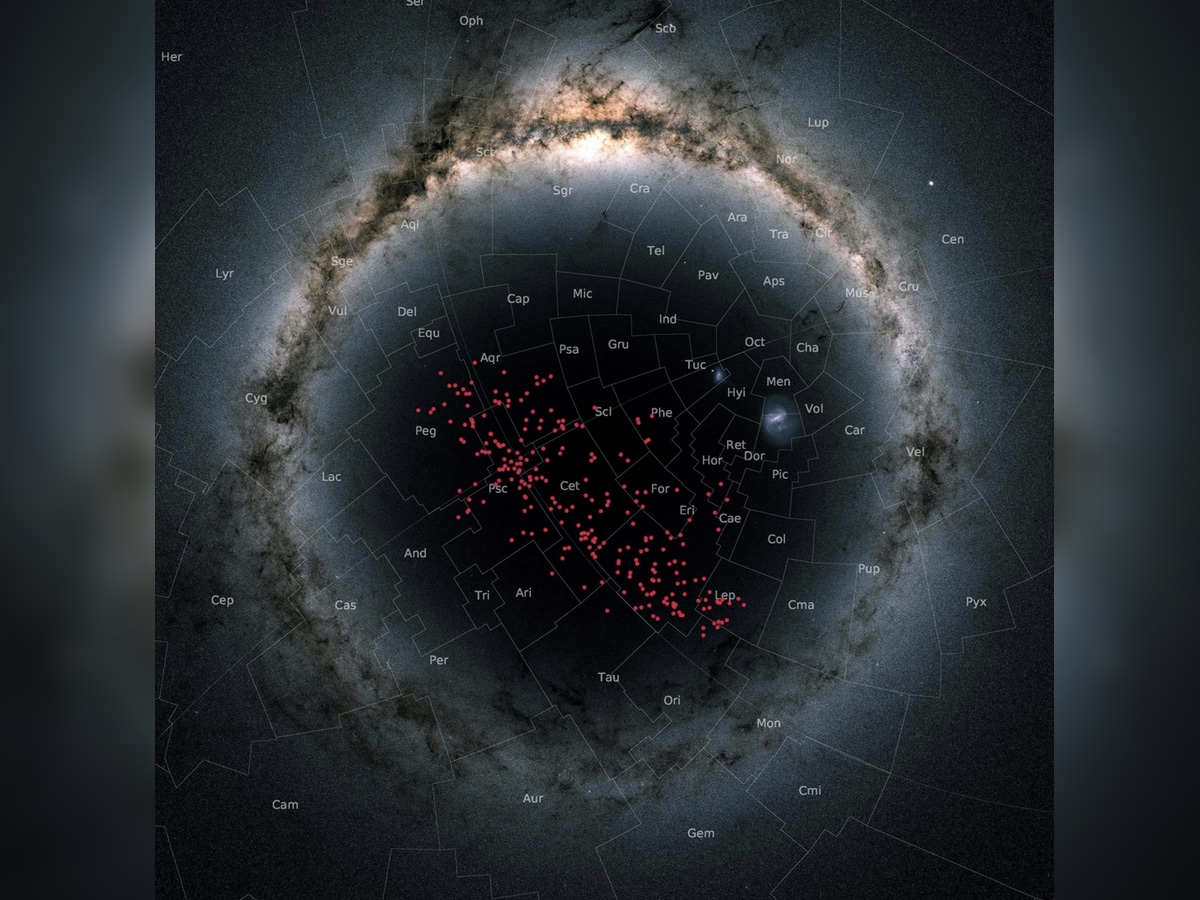'River of Stars' Streaming Through the Milky Way Was Hiding in Plain Sight for 1 Billion Years

One billion years ago, a cluster of stars formed in our galaxy. Since then, that cluster has whipped four long circles around the edge of the Milky Way. In that time, the Milky Way's gravity has stretched that cluster out from a blob into a long stellar stream. Right now, the stars are passing relatively close to Earth, just about 330 light-years away. And scientists say that river of stars could help determine the mass of the entire Milky Way..
Astronomers have seen these stars before, mixed in with lots of stars all around them. But until now, they didn't realize the stars were part of a group. The river, which is 1,300 light-years long and 160 light-years wide, winds through the Milky Way's vast, dense star field. But 3D-mapping data from Gaia, a European Space Agency spacecraft, showed that the stars in the stream moved together at roughly the same speed and in the same direction.
"Identifying nearby disk streams is like looking for the proverbial needle in a haystack. Astronomers have been looking at, and through, this new stream for a long time, as it covers most of the night sky, but only now realize it is there, and it is huge, and shockingly close to the sun," João Alves, an astronomer at the University of Vienna and second author of the paper, said in a statement. [Large Numbers That Define Our Universe]
Though space is full of these stellar streams, they're often difficult to study because they're well-camouflaged amidst surrounding stars. Typically, these stellar streams are also much farther away.
"Finding things close to home is very useful, it means they are not too faint nor too blurred for further detailed exploration, [an] astronomer's dream," Alves said.
Scientists suspect that star clusters, like the one that eventually became this stellar stream can reveal how galaxies get their stars. But in a big, heavy galaxy like the Milky Way, those clusters usually end up shredded, with gravity pulling individual stars in different directions. [Amazing Astronomy: Victorian-Era Illustrations of the Heavens]
This stream is big enough though, and heavy enough, that it's remained intact (albeit stretched) in the billion years it has circled the galactic center. And there may be more stars in the stream than those found in the initial Gaia data.
Get the Space.com Newsletter
Breaking space news, the latest updates on rocket launches, skywatching events and more!
Originally published on Live Science.
Join our Space Forums to keep talking space on the latest missions, night sky and more! And if you have a news tip, correction or comment, let us know at: community@space.com.

Rafi wrote for Live Science from 2017 until 2021, when he became a technical writer for IBM Quantum. He has a bachelor's degree in journalism from Northwestern University’s Medill School of journalism. You can find his past science reporting at Inverse, Business Insider and Popular Science, and his past photojournalism on the Flash90 wire service and in the pages of The Courier Post of southern New Jersey.











